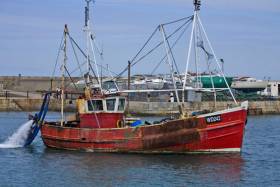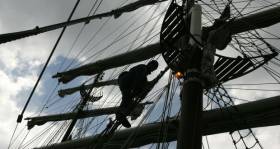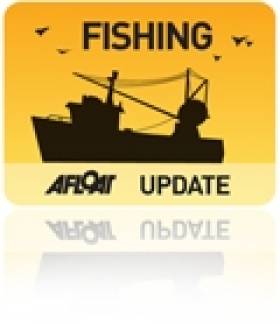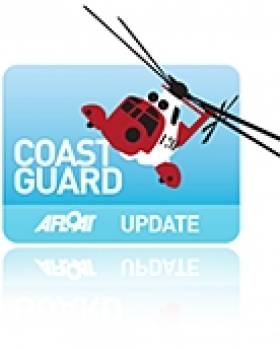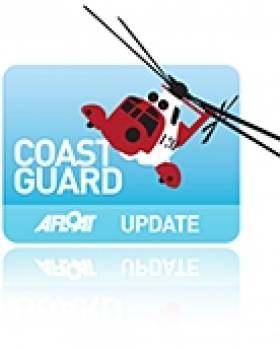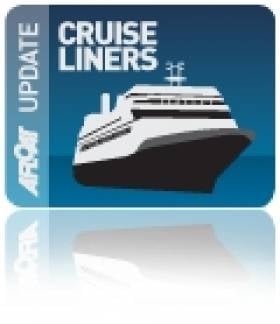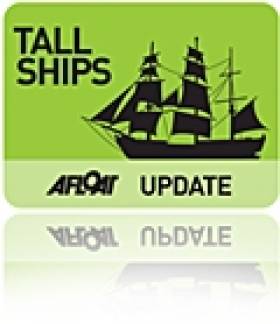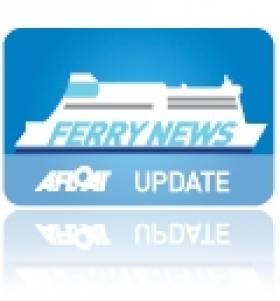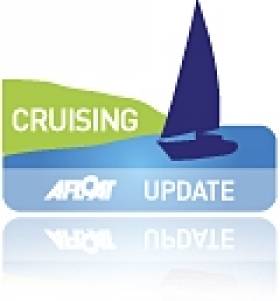Displaying items by tag: Marine Survey Office
MSO Seeks To Appoint Panel For Surveying Small Fishing Vessels
#Fishing - The Marine Survey Office (MSO) of the Department of Transport, Tourism and Sport (DTTAS) wishes to appoint a panel of surveyors to conduct surveys of fishing vessels of less than 15m length overall, in accordance with the Code of Practice for such vessels.
For more information or to register your interest for this panel, see the published tender on the eTenders Public Procurement website.
The MSO will accept electronic responses to this notice via a 'Tender Submission Postbox' facility. Further details of this facility are available at the tender notice page on the eTenders website, under the Postbox tab.
The closing date for completed applications is Friday 10 November.
Minister Confirms Course Approval As TD Cites 'Bad Blood' Between Maritime College & MSO
#CourseDispute - Controversy over the approval of maritime college courses "raises questions" about Ireland's marine authorities, says a Donegal TD.
As Donegal Now reports, Thomas Pringle was speaking in the Dáil after Transport Minister Shane Ross confirmed some 400 seafarers who graduated a refresher training course at the National Maritime College of Ireland (NMCI) would have their qualifications recognised by the Marine Survey Office (MSO).
All mariners are required to have completed the refresher training by 1 January next year – but the NMCI says the MSO refused to accredit its relevant course despite approval being sought at least 18 months ago.
Deputy Pringle noted that the NMCI "still hasn’t heard from the MSO. The minister confirmed there is bad blood between the office and the maritime college.
"If this is the case, this is not normal and raises questions around capacity of the office to administer marine matters.”
Donegal Now has more on the story HERE.
Approval of Maritime Course Delayed ‘Puts Jobs at Risk’
#CourseDispute -The National Maritime College of Ireland is in dispute with marine authorities in that it is putting the livelihoods of up to 400 seafarers and over 20 lecturers at risk, it is claimed.
The Irish Times writes that from January 1st next year, all mariners will be required to have completed a programme of mandatory refresher training in basic sea survival, boat-handling and firefighting.
However, the Cork-based National Maritime College of Ireland says a submission it made a year and a half ago for approval of its refresher courses has yet to receive formal approval from Irish authorities.
While the college says the UK’s Marine and Coastguard Agency has recognised the certificates since last August, the Irish equivalent – the Marine Survey Office – has refused to do so.
Further coverage of the story can be read here.
MSO Appointing Panel For Surveying Small Fishing Vessels
#Fishing - The Marine Survey Office (MSO) of the Department of Transport, Tourism and Sport wishes to appoint a panel of surveyors to conduct surveys of fishing vessels of less than 15m length overall, in accordance with a Code of Practice for such vessels.
To register your interest for this panel, and to obtain any additional information, see the posting on the eTenders Public Procurement website HERE.
Details of the request for applications are also included in the annex to Marine Notice No 61 of 2014, a PDF of which is available to read or download HERE. The closing date for completed applications is 14 November 2014.
#Coastguard - Minister for Transport Leo Varadkar has met with cabinet approval to the re-organisation of maritime safety and marine emergency which will combine the Irish Coast Guard (ICG) and Marine Survey Office (MSO).
According to today's Irish Times, the plan involves establishing a new body, the Irish Maritime Administration (IMA), which will direct the ICG and MSO.
The ICG is primarily responsible for emergency response to incidents on water, while the MSO monitors safety standards on boats and in ports.
However, the overhaul to allow for more civil servants involved in policy will have staff implications on the technical side, according to sources.
The ICG's radio station staff will be reduced from three-man to two-man watches, as 46 watch officer positions have fallen to 39. Retired staff may have to be hired on an ad-hoc basis, if budgets permit.
Irish Coast Guard To Be Merged With Marine Survey Office
#Coastguard - The Irish Coast Guard is to be merged with the Marine Survey Office, as The Irish Times reports.
Cabinet approval has been granted for Transport Minister Leo Varadkar's reorganisation plans, which will see the creation of a new body - the Irish Maritime Administration - that would be responsible for both services.
The changes come a year after the publication of the 'value for money' report commissioned by the Department of Transport to identify where efficiencies could be achieved in Ireland's maritime services.
Among a series of changes intended to shore up the State's maritime safety strategy, the merger will also reportedly see coastguard radio staff reduced from three-man to two-man watches - although Minister Varadkar has denied there will be any staff shortages.
The Irish Times has much more on the story HERE.
#CRUISE LINER SAFETY – Following the Costa Concordia incident off the Italian coast in January, there are to be "tighter" inspections of cruiseships docking in Irish ports according to the State's Marine Survey Office.
Checks on safety and crew handling of "abandon ship" drills and fire-fighting will be stepped up under the office of the Department of Transport. Marine surveyors will also conduct "detailed, additional" checks on whether or not crews are trained and familiar with their vessels, the office says.
Some 30 passengers were confirmed dead and two are still "missing" after the Costa Concordia ran aground and partially sank off Isola del Giglio, Tuscany, on the night of January 13th last.
Requirements for Recreational Craft at Tall Ships Races
The latest Marine Notice from the DTTAS includes important information for recreational craft expected to attend the Tall Ships Races in Waterford from 30 June to 3 July.
Race organisers and the Waterford harbour master have issued an approved water safety plan for the marshalling of spectator boats for the time the tall ships are in port and for the start of the race off Hook Head.
Skippers and crew must comply with all instructions and be aware of their obligations under existing maritime legislation (regarding avoidance of collisions, preventing reckless behaviour and ensuring correct safety equipment is on board).
Boat owners intending to visit should contact the harbour master for details on restricted areas and berthing spots via the Port of Waterford website or directly at 051 974 907.
Restrictions are also in place for passenger boats and ships. Only fully licenced vessels with plying limits listing Waterford as a point of departure are allowed to operate during the event. Temporary changes in plying limits can be made via the Marine Survey Office before 15 June.
Further details are available on Marine Notice No 28 of 2011 which is available to read or download HERE.
Passenger Ship Obligations to Assist in Search & Rescue
The Department of Transport's latest marine notice pertains to the requirements for passenger vessels in assisting with search and rescue services.
All passenger ships on international routes - such as ferries and cruise liners - are obliged to have a plan for co-operation with search and rescue operations should their assistance be needed.
The notice outlines that any plan should be developed between the ship itself, the ship company and the Irish Coast Guard. Plans must also be drilled periodically to test their effectiveness.
Ship owners and masters are also obliged to give an indication of the existence of their co-operative rescue plans by way of SeaSafeIreland (SSI) notification. Should that not be possible, the Marine Survey Office of the Department of Transport must be notified directly.
A PDF of Marine Notice No 18 of 2011 is available to read and download HERE.
Cruising School No Longer Operating in Irish Waters
South East Cruising School is no longer operating in Irish waters and in a letter to Afloat magazine, Principal Charlie Kavanagh, outlined his reasons for closure. The letter is reproduced below. The Marine Survey Office (MSO) was offered a right of reply but to date we have had no response.
Sir,
Having operated my business, South East Cruising School, under the auspices of the Irish Sailing Association for the last 14 years, I am very sorry to say that due to adverse circumstances, I now find that I can no longer operate in Irish waters.
In that time, I have assisted well over a 1,000 sailors to learn about our sport and improve their skills in a safe environment. I would like to take this opportunity to say thanks to each and every one for their custom and friendship over the years.
I recently submitted my boat for inspection under the Commercial Sail Passenger Boat Regulations and the Marine Survey Office (MSO) conducted an initial survey last May, which has completely stalled over a number of issues. As it is my opinion that these matters will not be resolved amicably, I have no choice but to suspend things for now and look at other options.
For those of you not familiar with the process, the Department of Transport's MSO has drawn up a set of Regulations that, in my opinion, do not help to promote safer sail training.
They have refused point blank to consider adopting the UK's MCA Code of Practice, administered by the RYA, the world leaders in most matters relating to sail training and from whom I hold my Yachtmaster Instructor qualification.
Five years ago, we had close to 15 schools offering cruiser sail training, but this is now down to five or six, and it's unlikely any more will get through this process without severe cost to themselves and the security of their boat(s).
Also, to the best of my knowledge, we have no powerboat school for those wishing to learn big boat power handling. Not content with banishing Asgard II to remain in her watery grave, cruiser sail training in Ireland is fast being sunk by the State too, as it reduces the number of outlets that teach safe practices to the general public wishing to go to sea in our island nation.
In 1997, I set out to operate my school under the watchful eye of Paddy Boyd of the ISA and subsequently Tony Wright, both of whom worked hard to aid and supervise us under the ISA Cruising Scheme. My thanks go to them and all in the ISA for their help over the years. It is with a heavy heart that I have to let go of my dream, having suffered the highs and lows over the years, but 2010 has been a nightmare, thanks to the MSO.
As an Irish taxpayer and committed community person, I - like many others in the commercial marine community - am disgusted at the State's attitude towards sailing and the sea.
Yours in Sailing,
Charlie Kavanagh,
ISA/RYA Yachtmaster Instructor


























